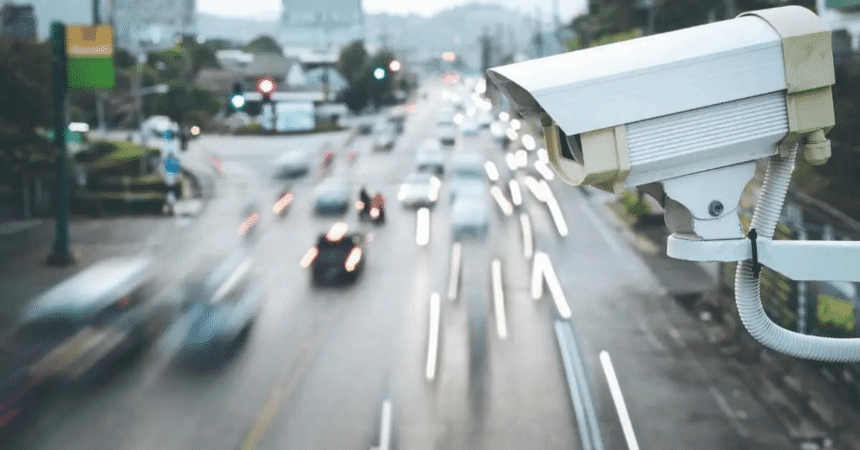Karachi, the largest city in Pakistan and a bustling metropolis, has officially launched the first phase of its ambitious Safe City Project. This initiative aims to enhance public safety through the installation of surveillance systems and real-time monitoring across critical areas of the city. With a population exceeding 14 million, Karachi has long struggled with issues related to crime and security, making this project a vital step toward ensuring the safety of its residents.
Understanding the Safe City Project
The Safe City Project is designed to integrate modern technology into urban security measures. By utilizing advanced surveillance systems, the initiative seeks to significantly reduce crime rates and improve the efficiency of law enforcement operations in Karachi. The project is a collaborative effort between the Sindh government and various law enforcement agencies, showcasing a commitment to leveraging technology for public safety.
Key Objectives
The primary objectives of the Safe City Project are:
- Enhanced Surveillance: The installation of thousands of surveillance cameras throughout the city will provide law enforcement with real-time data to monitor and respond to incidents as they occur.
- Crime Reduction: By utilizing surveillance technology and data analytics, the project aims to decrease the overall crime rate in Karachi, fostering a safer environment for residents.
- Improved Law Enforcement Coordination: The project intends to streamline communication between different law enforcement agencies, allowing for quicker responses to emergencies.
- Community Trust and Engagement: By improving safety, the project aims to rebuild trust between the community and law enforcement, encouraging citizens to participate actively in their own safety.
Phase One Implementation
The initial phase of the Safe City Project has commenced with the installation of surveillance cameras and related infrastructure. Currently, five poles have been equipped with 25 surveillance cameras, providing live feeds to the Central Police Office (CPO) Command and Control Centre. The S4 Control Room will monitor this footage, allowing police to respond effectively to incidents and maintain a vigilant presence across the city.
Asif Ijaz Sheikh, Director General of the Sindh Safe Cities Authority (SSCA), expressed optimism about the project’s potential to significantly improve public safety in Karachi. The initial phase is a critical milestone, and its success could pave the way for further expansions of the project.
Funding and Support
The Safe City Project has received substantial funding, with an initial investment of over Rs3 billion. This funding is aimed at supporting the first phase, which is expected to be completed within 12 months. Chief Minister Syed Murad Ali Shah has approved an additional Rs5.6 billion for the project, highlighting the government’s commitment to enhancing security in the city.
The funding will cover various aspects of the project, including the purchase and installation of surveillance equipment, infrastructure development, and training for law enforcement personnel. This comprehensive approach ensures that the project is well-equipped to meet its objectives.
Future Phases
The Safe City Project is structured in five distinct phases, allowing for independent execution of each segment. This modular approach provides flexibility in managing resources and timelines. The project aims to install a total of 12,000 cameras at 2,400 sites across Karachi, creating a vast surveillance network that will enhance security and public safety.
Once fully operational, the project will utilize advanced technologies, including Facial Recognition (FR) and Automatic Number Plate Recognition (ANPR), to assist law enforcement in identifying individuals and vehicles quickly. This capability is expected to enhance crime prevention efforts significantly.
Technological Integration
The integration of technology into the Safe City Project is one of its most innovative aspects. By leveraging modern surveillance and data analytics, the initiative aims to transform urban safety protocols.
Advanced Surveillance Systems
The project will deploy a range of advanced surveillance technologies, including:
- Facial Recognition Technology: This will allow for the identification of suspects and missing persons in real-time, enhancing the ability of law enforcement to respond to incidents swiftly.
- Automatic Number Plate Recognition: This technology will enable police to monitor vehicle movements and identify stolen vehicles or those involved in criminal activities.
- Intelligent Transportation Systems (ITS): ITS will help manage traffic flow and monitor compliance with traffic regulations, thereby reducing congestion and enhancing road safety.
Predictive Policing
The Safe City Project will also incorporate predictive policing strategies, which involve analyzing data to anticipate potential criminal activities. By identifying patterns and trends, law enforcement agencies can proactively deploy resources to high-risk areas, preventing crimes before they occur. This approach represents a significant shift from traditional policing methods and is expected to improve overall safety in Karachi.
Infrastructure Development
To support the Safe City Project, a dedicated SSCA complex is being constructed on Sharea Faisal near the Saddar police station. This facility will encompass 5,000 square yards and feature nine floors, including a two-floor basement. A significant highlight of this complex will be the installation of the largest screen in the country, measuring 50 by 80 feet, for monitoring and analysis purposes.
The SSCA will initially deploy around 1,000 staff members, supported by 110 vehicles, 200 motorbikes, and six drones to facilitate effective operations. This substantial investment in personnel and infrastructure underscores the government’s commitment to ensuring the project’s success.
Challenges Ahead
While the Safe City Project holds great promise, it is not without challenges. Karachi has faced persistent issues related to crime, including gang violence, theft, and other criminal activities. The effectiveness of the project will depend on several factors:
- Community Engagement: Building trust between law enforcement and the community is essential for the project’s success. Engaging residents and encouraging them to participate in safety initiatives will be critical.
- Resource Allocation: Adequate funding and resources must be allocated to sustain the project over the long term. Ensuring that law enforcement personnel are well-trained and equipped is vital for maximizing the benefits of the surveillance systems.
- Data Privacy Concerns: The implementation of surveillance technology raises questions about privacy and civil liberties. Balancing security needs with individual rights will be crucial in maintaining public trust.
- Inter-agency Collaboration: Effective communication and collaboration among various law enforcement agencies are essential for the project’s success. Streamlining operations and sharing information will enhance the overall effectiveness of the initiative.
Community Reactions
The launch of the Safe City Project has elicited a mixed response from the public. Many residents are hopeful that the initiative will lead to a significant decline in crime rates and enhance their sense of security. The prospect of improved safety measures is encouraging, especially in areas that have historically struggled with high levels of crime.
Expectations from Law Enforcement
Community members are expecting law enforcement agencies to actively engage with the public and demonstrate the effectiveness of the project. Transparent communication about the project’s objectives, progress, and outcomes will be crucial in building trust and ensuring public support.
Addressing Concerns
While many are optimistic, some citizens have expressed concerns about potential misuse of surveillance technology and the implications for privacy. It is imperative for authorities to address these concerns proactively and ensure that the project is implemented in a manner that respects individual rights.
Looking Ahead: A Model for Other Cities
The Safe City Project in Karachi has the potential to serve as a model for similar initiatives in other urban centers across Pakistan. By demonstrating the effectiveness of modern technology in enhancing public safety, the project could inspire governments in other regions to adopt comparable measures.
National Security Implications
In a broader context, the success of the Safe City Project could contribute to national security efforts by reducing crime rates and promoting stability in urban areas. As cities across Pakistan grapple with security challenges, innovative solutions like the Safe City Project will be crucial in addressing these issues.
Conclusion
The launch of the first phase of Karachi’s Safe City Project represents a significant step toward enhancing public safety in the metropolis. By integrating advanced surveillance technologies and implementing data-driven approaches to law enforcement, the project aims to create a safer environment for residents and visitors alike.
As the initiative unfolds, it holds the promise of not only reducing crime rates but also fostering a culture of safety and security throughout Karachi. The Safe City Project is a clear indication that the government recognizes the importance of public safety and is willing to invest in the necessary resources to address these challenges.
As Karachi looks forward to a future where safety is prioritized, the success of this initiative will depend on the collaborative efforts of law enforcement, community members, and government officials working together to achieve common goals. With a strong commitment to public safety, the Safe City Project has the potential to transform Karachi into a model city for security and urban safety in Pakistan.
#Karachi #SafeCityProject #PublicSafety #SurveillanceTechnology #CrimeReduction #UrbanSafety #SindhGovernment #LawEnforcement #SmartCity #CommunityEngagement







